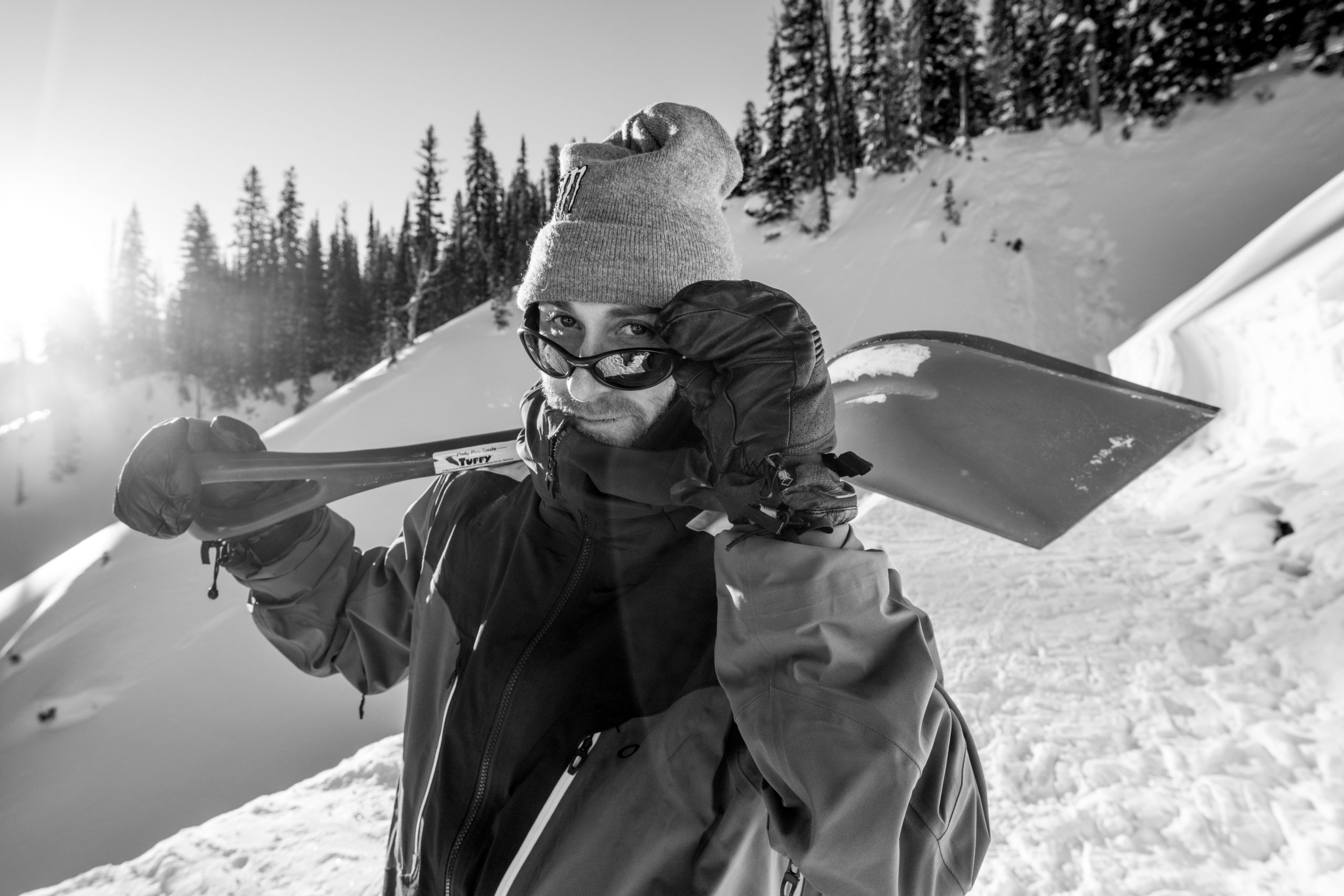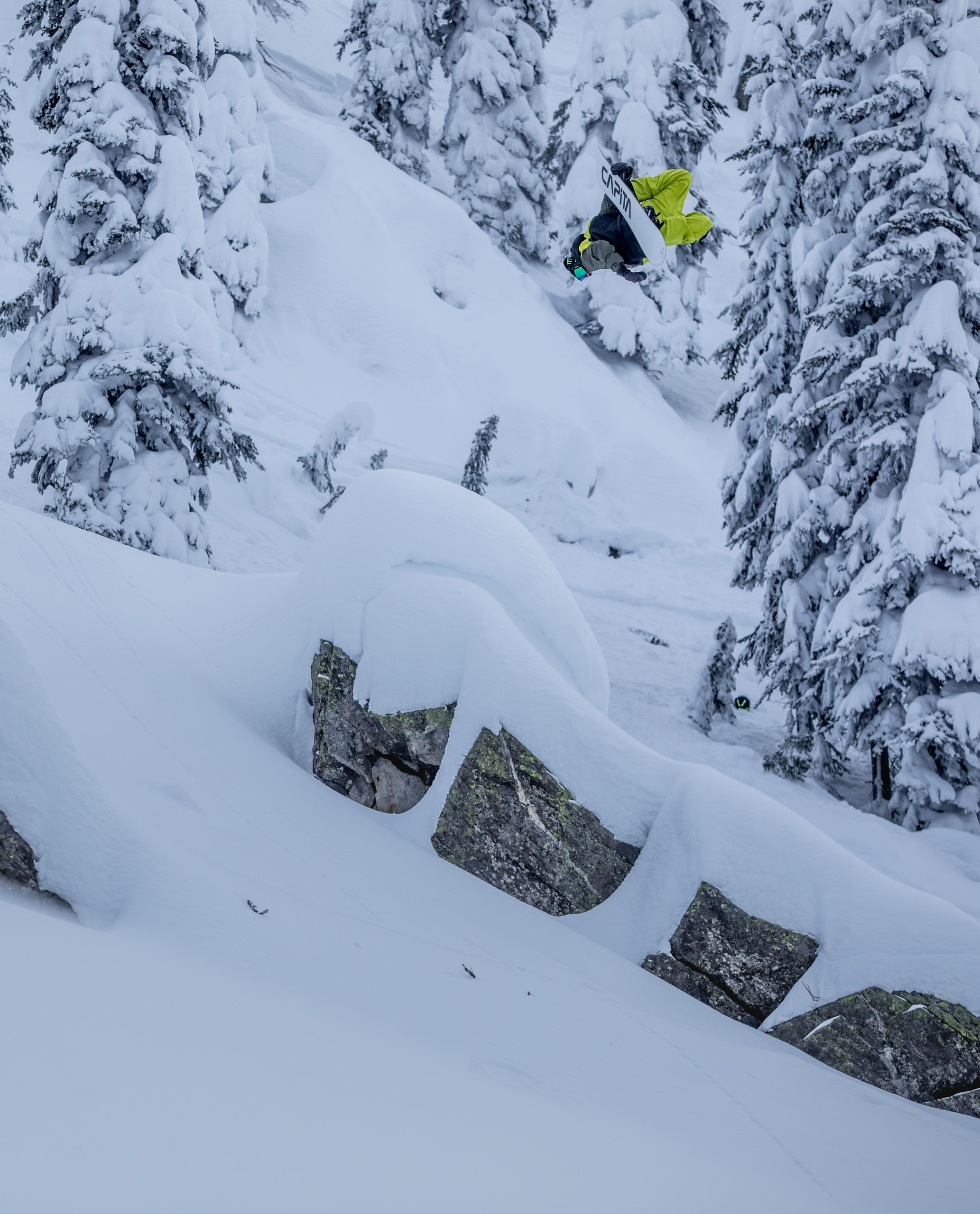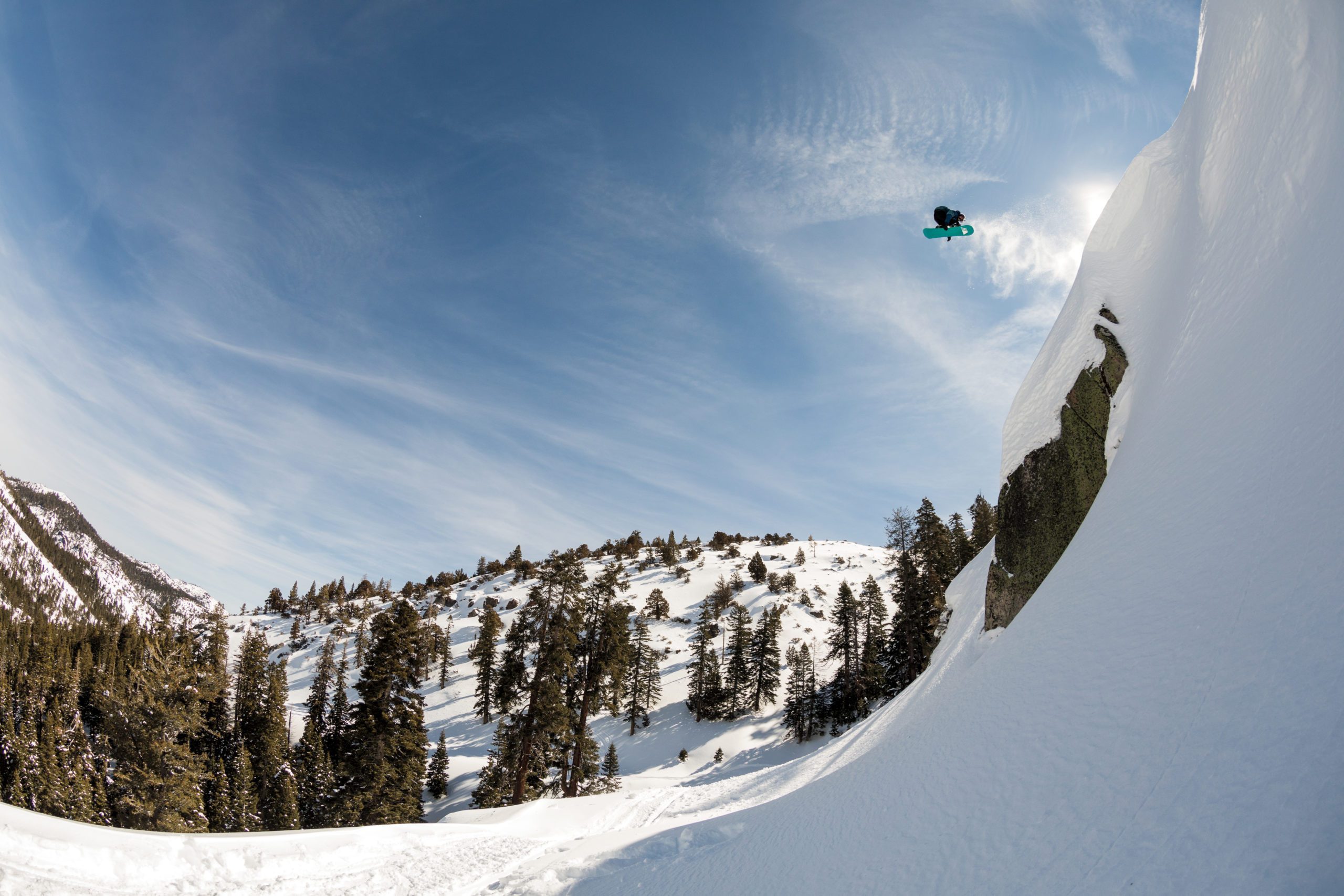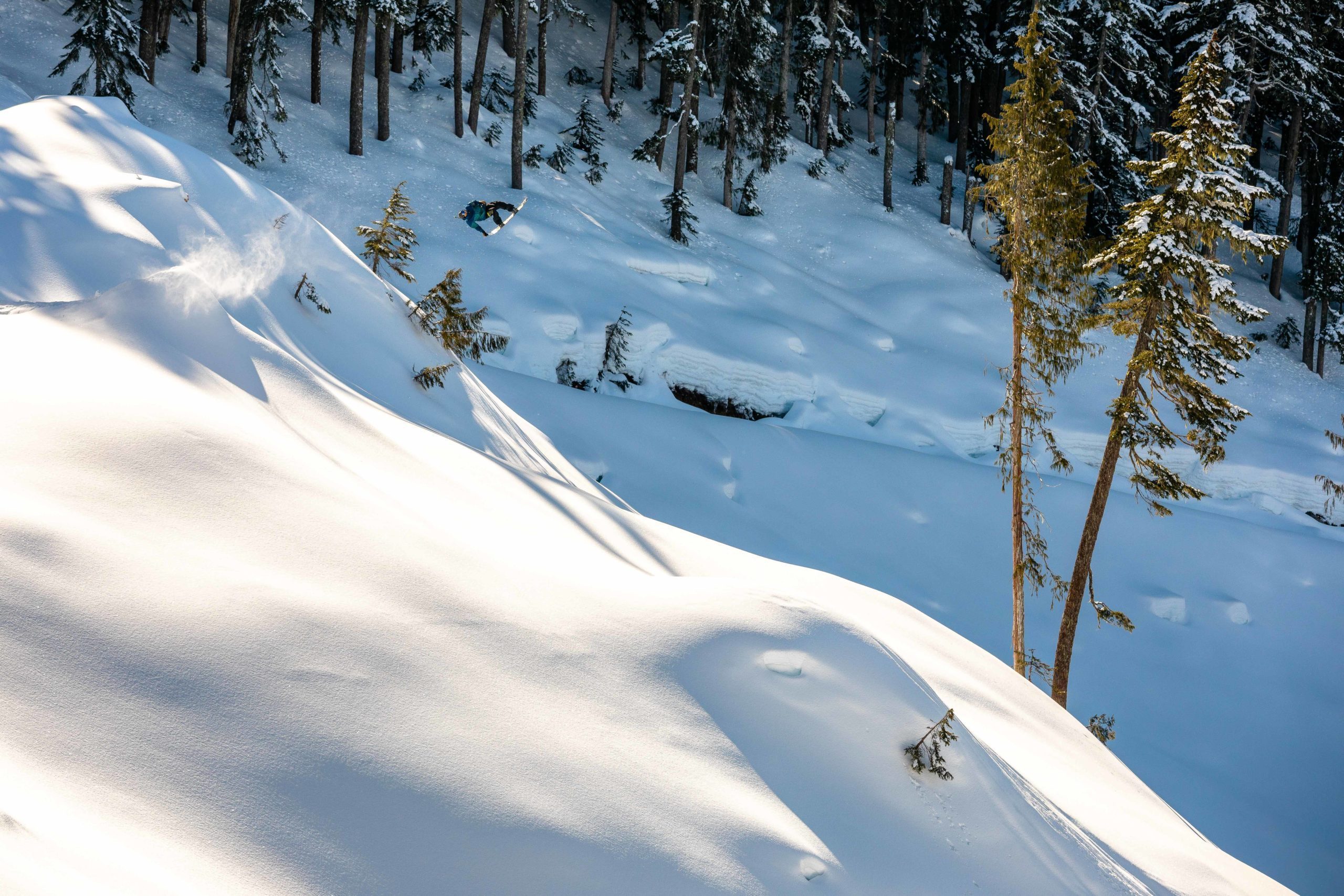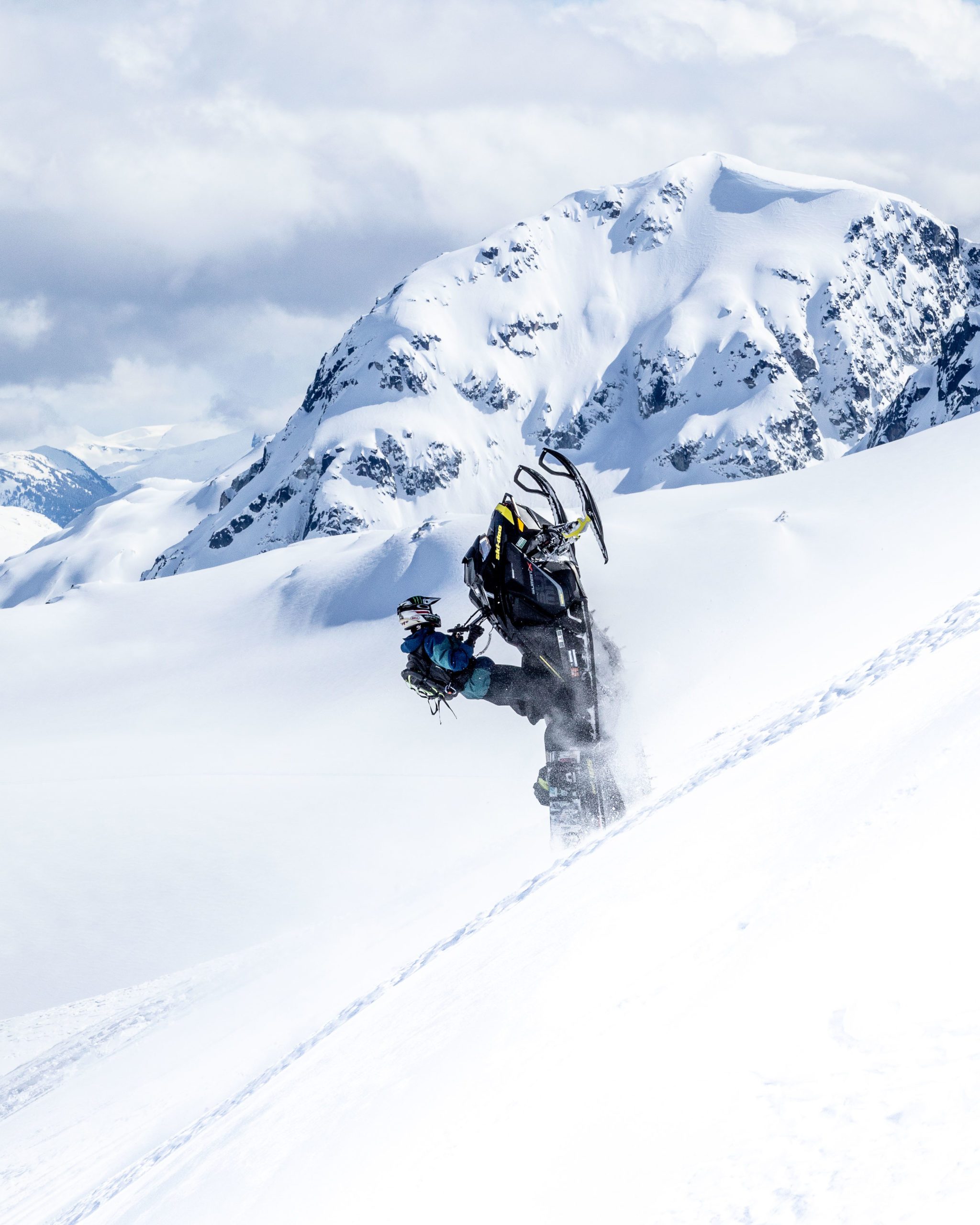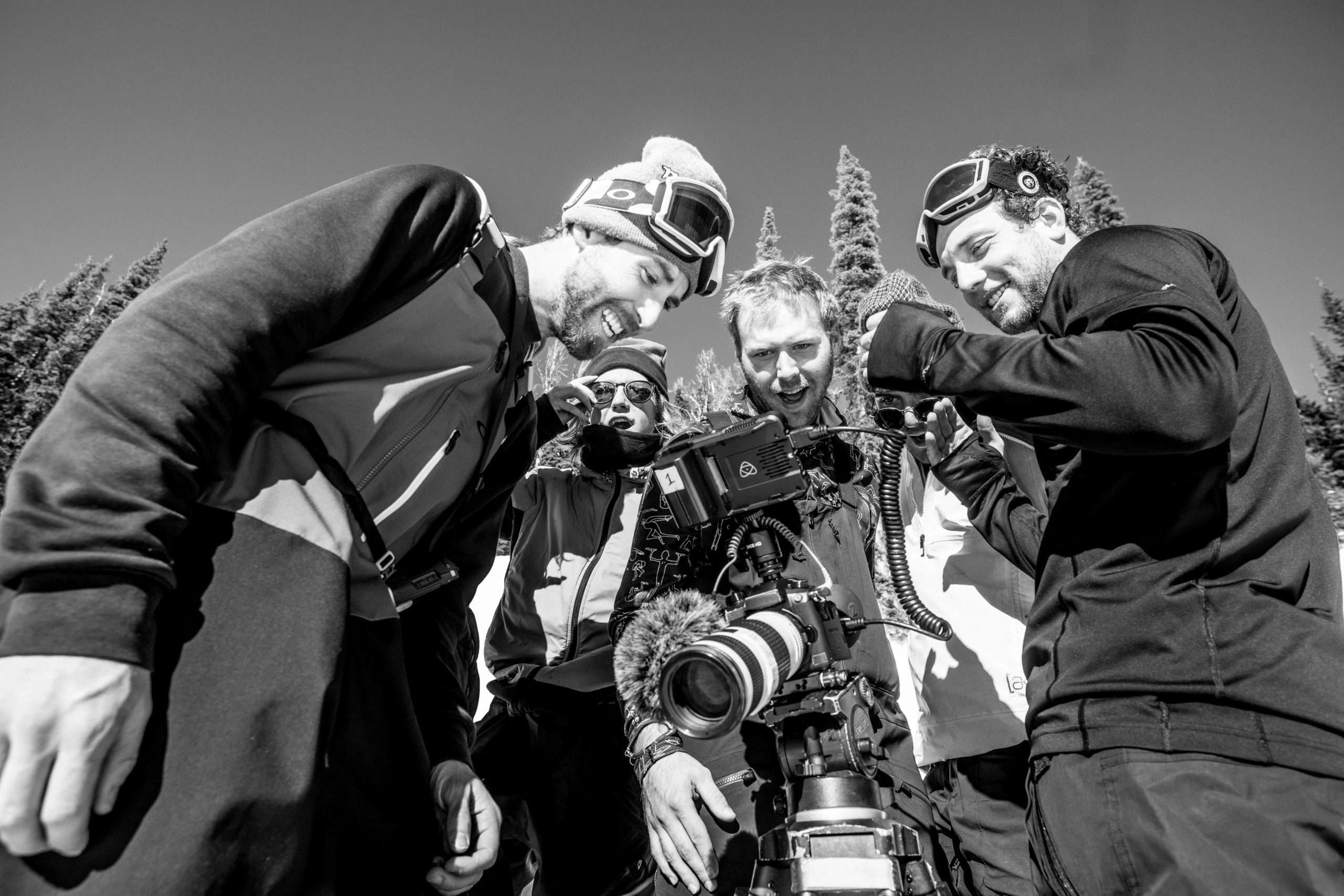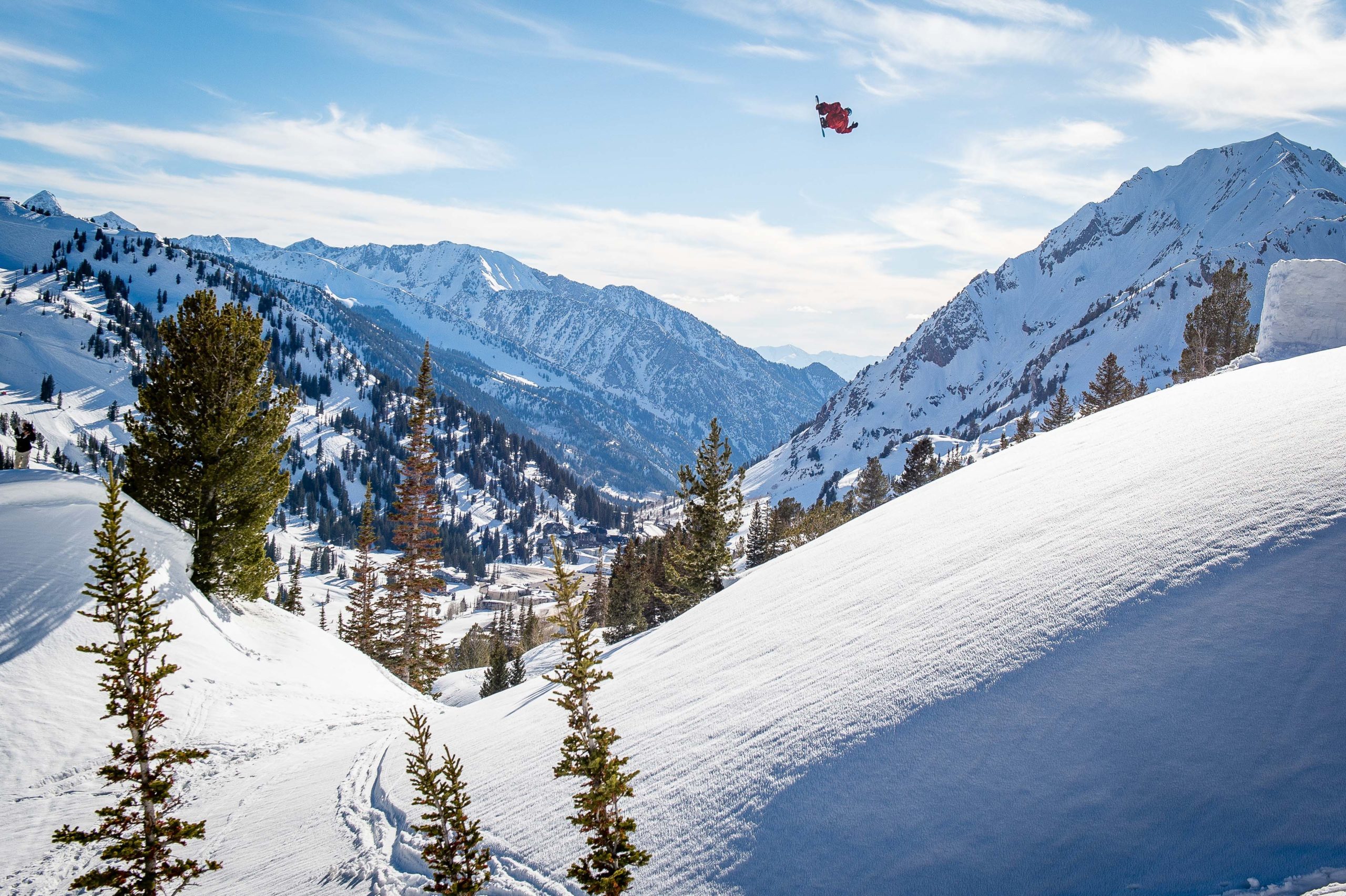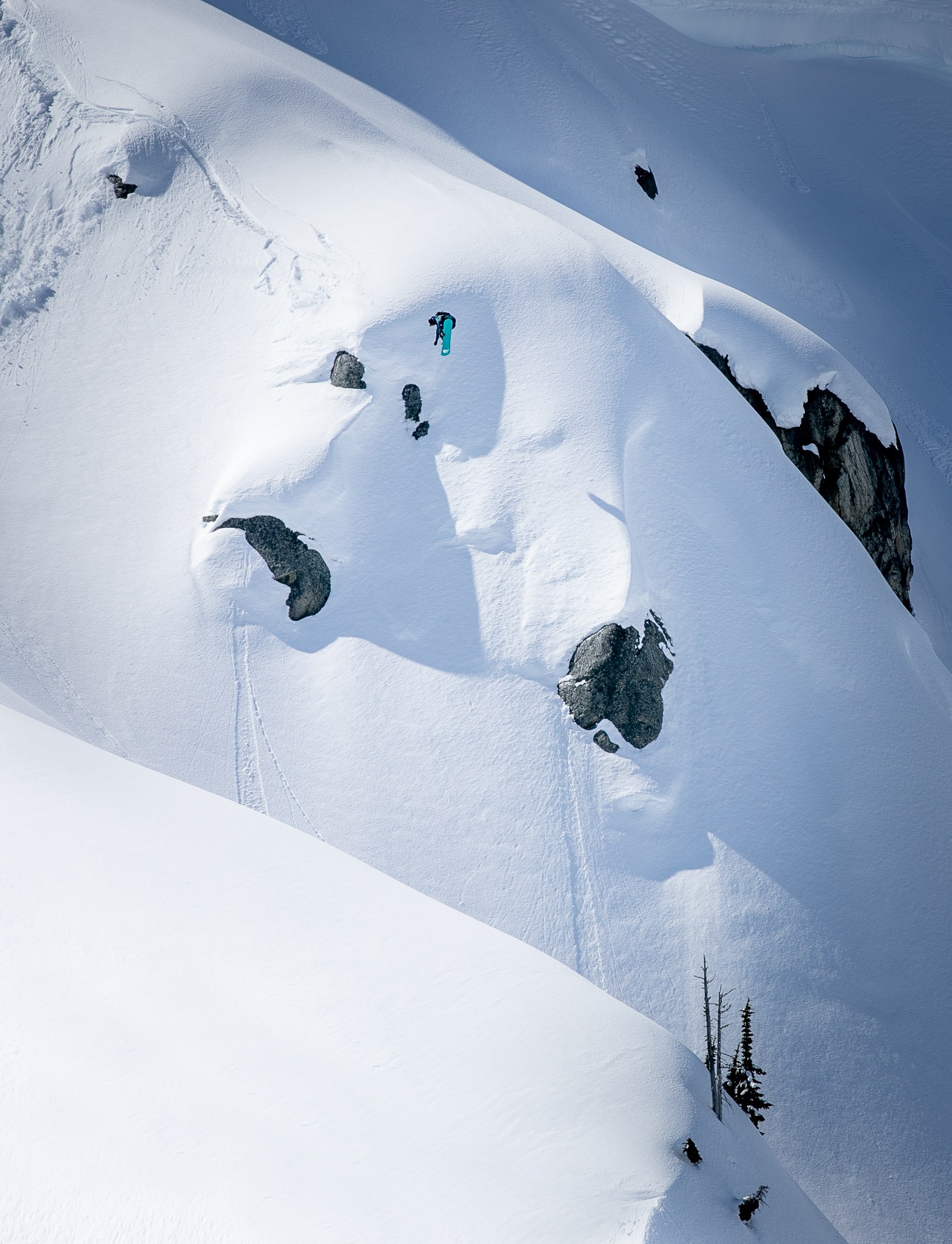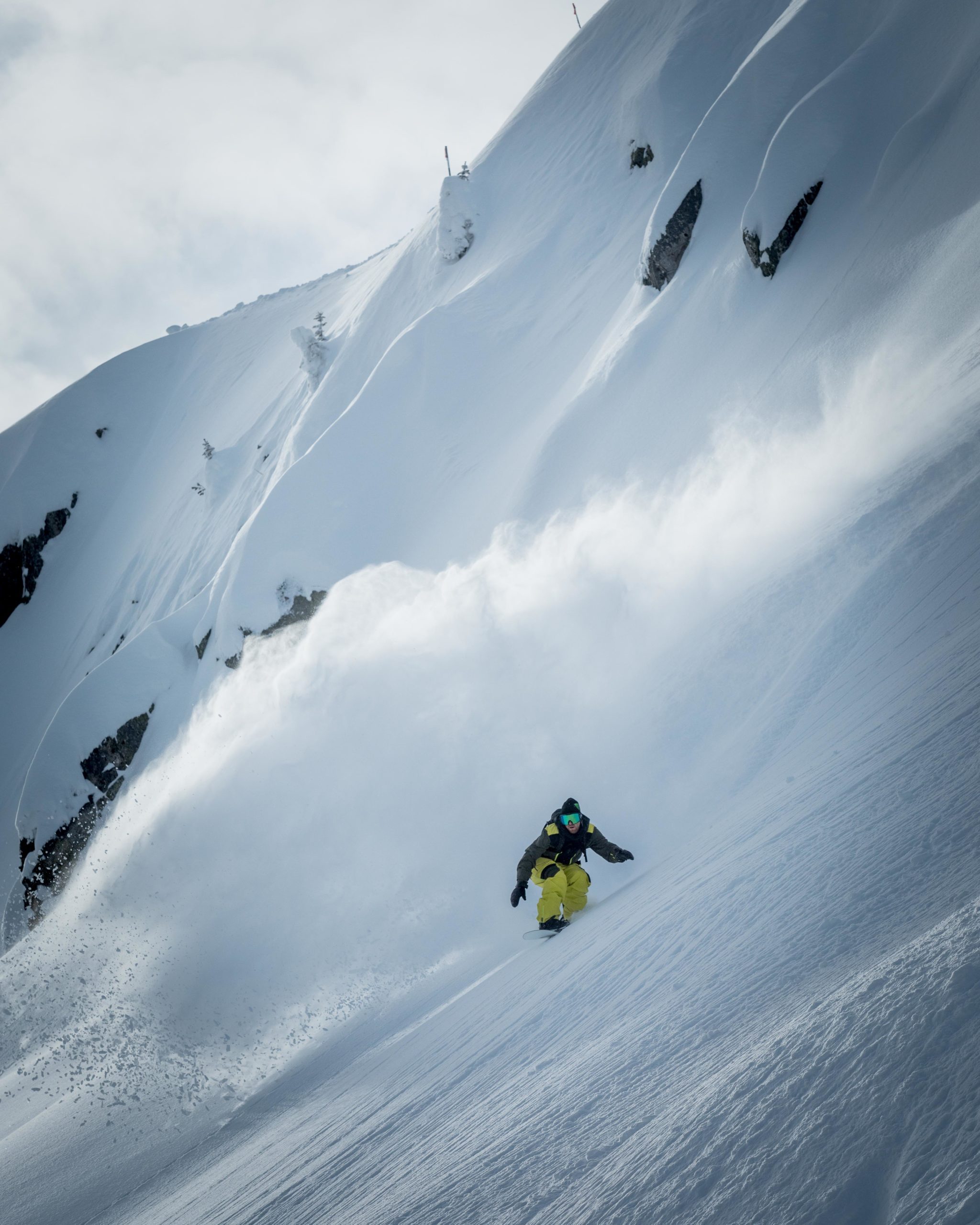By Stan Leveille
Sage Kotsenburg entered America’s hearts and homes in 2014, the same year that slopestyle was introduced in the Olympics. To the microcosm of the snowboarding world, though, Sage was already a household name, a young prodigy that seemed to have not yet achieved his full potential. A stand-out member of Lick the Cat, Sage quickly became a favorite in the contest scene. As multi-axis corks became standard in big broadcast events, Sage embodied the other end of the competitive spectrum with riding defined by nuanced creativity and non-stock trick selection. The Park City native was probably one of the few contest riders that wasn’t catching heat from snowboarding’s core during this time, when the riding population was wrestling with an identity crisis over the implications surrounding the reality of competition snowboarders rapidly becoming the most recognized riders in the sport. Even through the Olympic qualifiers, Sage remained a poster child for stylish riding in a field of mute-heavy triple corks, robotic spins and Flying Tomato rhetoric. He had a big contingent of snowboarders rooting for him to win, though many didn’t think it would actually happen. And then, it did. Sage took home the first-ever Olympic slopestyle gold and was immediately thrust into a role that made him question his own riding. You saved snowboarding. It was a sentiment that made Sage wholly uncomfortable as he sought to redefine his relationship with riding. So, after taking first on the biggest global stage, he walked away from competition and has since headed into the backcountry, finding his path among deep, open turns and cheese wedge run-ins. Sage reached the pinnacle of one aspect of snowboarding and effectively reinvented himself to grow into an entirely different category of rider. He has transcended the arbitrary lines we create to separate ourselves as snowboarders and has only further captivated the industry at large. And in doing so, he’s still the very same Sage we have followed for years: a true snowboarder’s snowboarder. We sat down with him to get his take on where he’s been, where he’s at, and where he’s going and he provided us with some very Sage Wisdom.
Suave Sage.
If you had to, like it was the beginning of a Wu-Tang song, list off the Lick the Cat members.
Sam Taxwood, Griffin Siebert, Blaze, Jerm, Gus Warbington, Max Warbington, me, Zak Hale, Michael Wick, Blake Paul, Spencer Schubert, Nils Mindich, Mike Bogs.
Do you think there is a crew that exists in modern snowboarding that is better than Lick the Cat?
Thinking about it now, it’s kind of trippy that everyone made it in their own way. You have Ben Bilodeau in the streets, Stax can ride anything, Blake Paul is backcountry god, I went contest route, Griffin Siebert is an amazing activist and splitboarder. Everyone kind of made it in their own different way, which makes it special. I think Dustbox would be the closest thing to what we had going on in the beginning. They’re not really trying to make anything happen but in doing so, they’re making everything happen. It’s just kind of working.
How was it that you ended up going the contest route?
I’m a crazy competitive person at heart, but not in an I need to win every contest way, more like a self-competitive drive. When we were all growing up, I would compete against Blake, Griffin, Stax, the Warbingtons—all of them. As we grew up, they faded out of it. I still wanted to get that feeling of winning or putting together a run. For a long time, that never really stopped, so I just kept going down this route. Beyond just competing, I wanted to do these tricks that no one else had done. So that became a part of it for me, trying to put down these tricks that I had never done or maybe no one had put into a contest. This was when double corks started, as well as cab twelves and going backside off the heels and doing these crazy grabs. It made me happy to compete, because I’m wasn’t just out there to try to win, but if I could win doing something that I thought was crazy, then that was a double win for me.
Sage highlights his ability to grab Japan. Baldface Lodge.
Growing up in Park City, you probably experienced your peers getting picked up at a young age and being groomed for the snowboard spotlight. Did this make you strive for that same validation?
It’s funny, my best friend/arch nemesis when I was probably thirteen through seventeen was Tyler Flanagan. He had a McDonald’s commercial. He was on Volcom, Electric, Gnu. He had the Danny Kass board. I had my own gig going. Quiksilver for a while, Rossignol, and Smith. Then I was on CAPiTA, as well. They all supported me, but not like they were with Tyler. He was really in the scene; he was on Grenade and everything. I wanted to be on all that stuff and trying to battle with Tyler as the little kid prodigy definitely made me who I am today. He always had it and I was always kind of one step behind. I remember seeing him do back sevens off the middle jump in Mammoth, and I was like, okay, next year when I go there, I’m going to do back sevens. I’m going to do back nines. I’m going to do cab nines. I’m going to do all these tricks that he can do just to show everyone that I can do it, too. That’s where I still am so competitive, but as I said before, it might not be just for a contest win, it’s like an internal battle that I make with myself.
Let’s pivot and talk Olympic slopestyle. In 2014, you were involved in the initial discussions with other snowboarders as to whether you should boycott the event. What went on there?
Yeah, there was an organization called WAS, We Are Snowboarding, that Chas Guldemond spearheaded with a couple others. The internal conversation was essentially, should we be going to the Olympics? And if we are, we decided as a group, it was going to be on our terms. Turns out though, getting a bunch of seventeen to twenty-three-year-old snowboarders to commit to this protest organization—whatever you want to call it—was not easy. You’re trying to corral a bunch of kids that, at the end of the day, are just hyped that they’re snowboarding. It’s hard to see the big picture of what is at stake. But also, when you grew up watching Ross Powers, Danny Kass, JJ Thomas, and Shaun White go to the Olympics, there’s a part of you that wants a piece of that.
Tahoe Backcountry? More like Tahoe stack country.
It’s interesting too, because going into the Olympics, you were not favored to win. But the snowboard community was rooting for you. They felt like you represented snowboarding to them in a way that most modern contests riders did not. And then you won. It seemed like it was this really big, happy surprise. How much managing of expectations did you really have to do? Were you actually shocked when you won or did you have the foresight to play it cool?
Dude, that’s a good question. Going into it, I was twenty. When you’re twenty, you think you’re grown up, but you’re still pretty much a kid. Bob Costas was saying snowboarding shouldn’t be in the Olympics and I’m like, this guy is a clown, I’m over him. There was all this negative stuff about competitive snowboarding, everyone was arguing about the triple cork mute grab and I was like, I’m over all this stuff. I’m going to do my own thing; I don’t care if I even go to the Olympics. I don’t care if I’m on the team. But I did care. A lot of people said things like, “You didn’t look like you cared that much going into it.” But I really did care going into it, mostly about representing snowboarding in a good way and making sure that when we go the the Olympics we don’t look like the people who don’t belong there. That became kind of my mentality when I was there. But to answer your question, yes, it was a true surprise that I won. The qualifiers happened and I did a run that I personally thought was good. I got sixteenth and it pissed me off. The top four people made it straight to finals. The semi-finals and finals were the same day. I didn’t have another run, so I just did the same run as in qualifiers and got scored second all of a sudden. That sparked my interest, wondering if the judges—and I don’t know to this day—were thinking, “Maybe this is where we should level this stuff out and actually respect a run that had some different tricks and creativity in it.”
But here I am at finals. I called my brother, Blaze, and I just go, “I’m going to go sixteen on the last jump.” I’m rationalizing to him that it’s a 1260 with an extra 360, so you’re landing the same way. It’s the same spin. I do it, basically black out, and I land. I was so surprised that it all came into fruition and I won. It became this thing where everyone kept saying, “You saved snowboarding.” That made me feel so uncomfortable and I hated it. It made me crawl into this weird shell. I just kept going, “Well I’m happy to be here. I love snowboarding.” It snowballed into this weird cult following where I was this dude that did “the run that saved snowboarding” or some weird thing. I’m laughing at the time, too, because I’m all, “Well, Mark podiumed, and he’s a homie. Stale podiumed, he’s a homie.” I just felt super uncomfortable after it. That’s all I can remember.
Based on this photo, one might think Sage’s career is in a bit of a tailspin. Whistler Backcountry.
Then you enter the whole media circus. You’re on Letterman. That had to be dope.
That one was crazy. I remember leaving Letterman’s studio and looking up at the TV as we were walking out, and he said something like, “You know that Sage guy was great. I want my son to grow up and be like Sage.” That made me feel crazy. Happy, but also nervous, you know? Am I a good person? Should David Letterman’s son grow up and be me? It was kind of crazy pressure, but those moments are the ones that I always remember the most.
At what point did you pump the brakes on the media circus?
I enjoyed a couple weeks of it, but It was literally this moment where Halldor [Helgason] was going on a powder trip in Switzerland and I got an Oscars invite for the exact same time. I turned the down the Oscars invite and went to Switzerland on a pow trip. That was kind of a defining moment where I knew I loved snowboarding more than Olympic fame. After that, I didn’t get as many calls for media obligations.
Did you struggle with that?
Yeah, I actually had a couple years where I wasn’t really that happy. You go through this really weird Olympic fame tour. You’re meeting Obama all of a sudden. Obama said I was a chill guy, you know? Letterman is saying this stuff, you’re on Conan, and these people are loving you. You’re in the mass media. Then you make a conscious decision to leave that and start weaning away from competing, and all of that goes away. I still get recognized at mountain towns and whatnot, but I don’t care who you are, when people are hyping you up and saying that they’re so happy to meet you and they love you and love what you do, it’s just a weird thing to walk away from. I was really confused for a long time as to whether I made a huge mistake not continuing down the competitive way. Even when I went to contests after the Olympics, I didn’t want to be there. I sucked. I fell on tricks that I always had. That shook me up and just added to me freaking out, thinking everyone thought I was a phony. At the end of the day, that route wasn’t there for me anymore. The Olympics was basically the end of the road for me whether I won or not, and I won. The road almost kept going but it was off a cliff. I was driving there, but then I stopped right before. That’s when I turned to riding a lot of backcountry and I found so much happiness in that.
Sage against the machine.
Even though you may have dipped out of the national spotlight, you have been a voice in competitive snowboarding when the time has called for it. This past winter, was it the head of the FIS that denied climate change?
The president of the FIS came out and basically denied climate change. Jean Franco Kasper.
Have you met that guy?
No. He made a complete ass out of himself. It’s a very complex situation for sure, but that guy comes out denying climate change as a FIS world cup is going on, so my thing was that this is the easy boycott. Listen, I know a couple people are going to miss out on a podium and some money but hey, let’s look at the bigger picture here. If you boycott this, it makes a huge statement. That dude needs to step down. Maybe get someone in there that actually wants to spread a positive message and maybe has a little respect for snowboarding on the side. That was my argument. Yeah, it’s the middle of the world cup, I get that there was some stuff on the line, but at the end of the day, is that fifth place or first place worth it? Over having this guy in charge? He’s still the president. He got a little slap on the wrist but there’s so much stuff going on in social media right now, it just falls by the wayside. If you do a physical, public protest and you have your reasons why, most people are going to respect that. Having someone that actually wants to talk about climate change would be very important for the leading federation that governs skiing and snowboarding in the Olympics.
Yeah, you would think that for the future of skiing and snowboarding that the person should be like, “Ah, maybe we should take this seriously.”
There’s the age-old saying that I think a lot of our parents told us: Leave the planet better than you received it. I’m not speaking on everyone’s parents, but a lot of that generation are the ones not supporting this and contributing to killing our planet. At the end of the day, I think it’s a pretty simple thing. Do you want to better our planet? Do you want to look at renewable energy? Do you want to at least try to make a difference? Or tell your kids that you just chilled and didn’t do anything.
A Joyous bunch.
On the complete opposite side of impending doom, how did the film Joy come about?
I’ve gotten to ride with Ben Ferguson a lot, and he had an opportunity this year to not compete as much after the Olympics, as did Red Gerard. I got a call from Ben and his agent Ryan Runke, which essentially went, do you guys want to ride together? Yes, we all do. Let’s make this happen.
You’ve got a squad of Olympians and contest riders that want to show that they shred IRL. The Chad’s gap session looks insane. You’re on some T. Rice shit.
That means a lot! I always was in love with snowboard movies. My first movie was Goin’ for Broke. I’ve always liked big jumps. The first couple years filming, I didn’t really get to any terrain that I really thrived in. So this year, I was in control of where I wanted to go and I made a couple jumps that I really wanted to hit. Chad’s was one of them. I went to the Pop premier in Salt Lake, I think I was eleven. Travis and Romain hitting that blew my mind—and it was in Utah. From then on, I had this weird affection for Chad’s and I’ve wanted to hit it for years. The time was never right–it has to fill in right and the crew has to be there. You have to have people that aren’t even hitting it building with you because it takes like three days. When that day came to hit that, I just went into a crazy state of mind. I was just thinking, This is back to Sage at Superpark 14. I gotta do something on this.
Sage Kotsenburg, backside double cork 12 on Chad’s Gap.
You stepped to Chad’s, but it seemed like it took a second for you to really catch your stride in the backcountry?
I thought I could just go right into filming and be on the same level I was in competing. Going from winning the Olympics and being one of the top guys in contests and then making this conscious decision, telling my sponsors, “Hey guys, I’m not going to compete anymore,” I quickly had a realization that I was middle of the pack. I didn’t know as much about the backcountry. I didn’t know where to go or how to land in pow. Even if you’re decently good at it, you start doing a full year in the backcountry and you realize how many jumps are unsuccessful. That was a rude awakening for me, but it almost brought me back to the competitive mindset. I wanted to get better, take avy courses, watch all these movies, and figure out where all these spots are. I needed to know how to get there, I needed to be with the people who can take me there and I needed to learn from them. I started taking all those necessary steps,and now I’m at a point where I’m actually happy with my backcountry riding. I’m always striving for more, but this was the first year I was actually happy with the stuff that I got the whole winter. When I see the footage, I’m not second guessing myself.
You kind of reinvented yourself.
I remember seeing a comment on Instagram or something. It was on Oakley’s page. It was a photo of me and someone commented, “So sick to see you guys sponsor him. He hasn’t been doing much the past couple years.” That resonated hard with me. I took a step back and realized, Okay, Sage. Cool, you won the Olympics and you’ve got some X Games medals, but you need to keep this up. That was three years after the Olympics. I went through this phase where I wasn’t competing, I was kind of filming but kind of competing, and I didn’t really know what I wanted to do. That hit me hard when I saw that, but it was good. It was something where I thought, I need to get back to Sage’s standards, and what are those? I’m always working on new goals and everything, but it was definitely a kick in the ass. I was like, Well I’m going to go do backcountry, and whoever is down can roll with me on this adventure and I hope I can do just as well as I was competing, but if not, I’m sorry.
Sage may get political sometimes, but this is just some Whistler blower. Whistler, BC.
What’s up with your board brand, Anthem?
Anthem came about after me signing with APO when I was nineteen. For the people reading this who don’t know, Apocalypse was an old snowboard company that was sold and went through a bunch of changes. They were in France and were kind of more of a ski company. They were making this comeback and wanted me, Spencer O’Brien, and Eero Niemela. I thought I could grow with them and bring this cool thing back. I remember Bridges called me and literally the first thing out of his mouth was, “Is it a-po or ah-po?” At that point, I knew. Those guys were awesome—no bad blood there—but I got out of that deal after the Olympics. I had this talk with my manager, Steve Ruff, and I told him that I didn’t know what I wanted to do with boards, that I needed some time to think. In my eyes, a board deal is something that has always been a legitimizer. It’s coveted. I wanted to make sure whoever I went with next, I really respected them, they respected me, and they were respected in snowboarding. I was riding a bunch of different boards. I was getting some blank ones made from people. Everyone kept asking, “What are you doing?” I thought super long and hard on what I wanted to do, and I wanted to make a snowboard company. It took me a long time to go through the process of doing it. I’ll be honest, the last thing everyone needs is another snowboard company, but I loved the idea of a rider-owned company with a cool team that does rad stuff. I know it’s not a new idea, but I wanted that. So I started down the route and it’s been crazy. We finally have boards now. We’re working on getting them for this season and basically at the end of the day, we’re raw. We’re not polished. We’re not a huge brand, but we’re going to have a bunch of fun and do rad stuff along the way. We’re here for a good time.
Here we see Sage saying it AND spraying it. Baldface Lodge.
At X Games last year, you, Nik Baden, and Hailey Langland were on the boards. Everyone was wondering what the boards were and no one had any answers.
That was exactly how I wanted this thing to start, because it gave it this weird, cultish feel. To drop the boards at X Games was, looking back on it, such a sketchy idea. Getting the first boards out there, but not announcing what Anthem was, was terrifying. Hailey was riding in slopestyle and she was one of the favorites to win, but she had been injured, so she hadn’t done a lot of her big tricks. She was dropping into the finals, and I’m talking to Ruff, I go, “She’s not going cab double, is she?” He’s like, “Yeah, she’s going cab double ten.” For people who don’t know, if you under or over rotate a cab double ten, you’re on the tail of your board. That thing is snapping. I don’t care what board it is, that thing is taking some damage. I’m tripping, like sweating bullets, Thinking, You got these new boards, Hailey is dropping in, going Rambo on the course. Then she stomped it. It was really cool. It was a special moment for all of us because we had just gotten these boards and then all of a sudden, we have an X Games silver medalist. Meanwhile, everyone is still like, “What are these?” But it made it into this really fun adventure where some people knew and some people didn’t. I’d hear kids say, “I heard it’s this. I heard it’s that. My friend told me it was this.” It became this really fun thing and it made it really enjoyable for me to start working on the back end of it. One day I need to compile all the questions and make a board out of it. What is this thing called? That’s a good graphic right there.
More from SNOWBOARDER Magazine here.
Original Post from this site
